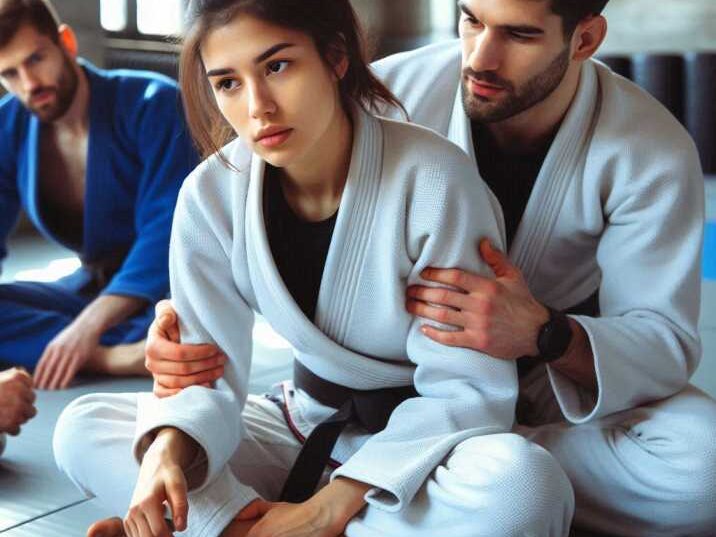Introduction
Table of Contents
Jiu Jitsu is a martial art that focuses on grappling and ground fighting. It teaches practitioners how to use leverage and technique to control and submit opponents, making it an effective self-defense system. Whether you are a beginner or an advanced student, Jiu Jitsu training can improve your physical fitness, mental focus, and discipline. But what is Jiu Jitsu like? Let’s explore this exciting martial art in detail.

What Is Jiu Jitsu?
Origins of Jiu Jitsu
Jiu Jitsu has its roots in Japanese martial arts and later evolved into Brazilian Jiu Jitsu (BJJ) through the influence of the Gracie family. Today, BJJ is one of the most popular martial arts in the world, widely practiced for self-defense, sport, and fitness.
The Core Principles of Jiu Jitsu
Jiu Jitsu emphasizes:
- Leverage over strength – Instead of relying on raw power, Jiu Jitsu practitioners use body positioning and technique to gain an advantage. This allows smaller individuals to defeat larger and stronger opponents by applying proper leverage.
- Technique over brute force – The effectiveness of Jiu Jitsu comes from precise movements rather than sheer physical strength. Proper application of technique ensures that a well-trained fighter can control and submit an opponent with minimal effort.
- Ground control – Since most real-life confrontations end up on the ground, BJJ focuses heavily on controlling an opponent from various ground positions. Practitioners learn how to maintain dominant positions and escape from inferior ones.
- Submissions and joint locks – Jiu Jitsu teaches how to apply chokes, arm locks, and leg locks to neutralize an opponent. These techniques force the opponent to submit, making them effective for self-defense and competition.
What Is Jiu Jitsu Training Like?
1. The Structure of a Jiu Jitsu Class
A BJJ class follows a structured format to maximize learning and skill development. It begins with a warm-up, including stretching, jogging, and movement drills to prepare the body. The technique practice segment focuses on learning and repeating specific moves such as sweeps, submissions, and positional control. In live sparring (rolling), students test their skills by practicing against a fully resisting opponent. Finally, the cool-down phase includes stretching and breathing exercises to aid recovery and prevent injuries.
2. Training Gear for Jiu Jitsu
Practitioners wear different gear based on training style. The Gi (Kimono) is a durable cotton uniform used in traditional BJJ, allowing grips and control techniques. No-Gi attire consists of rash guards and shorts, promoting speed and fluid movement without reliance on grips. The belt system represents skill progression, starting from white (beginner) and advancing through various colors to black (expert), demonstrating years of dedication and expertise.
3. Physical and Mental Benefits of Jiu Jitsu
Jiu Jitsu offers numerous physical benefits, such as increased strength, flexibility, and cardiovascular endurance, improving overall fitness. It also enhances problem-solving skills by teaching students to think strategically under pressure. Consistent training builds confidence and self-discipline, helping individuals stay focused in daily life. Additionally, the mental resilience developed in BJJ extends beyond the mats, improving stress management and perseverance.
Techniques and Positions in Jiu Jitsu
1. Fundamental Positions
- Guard: A defensive position where a practitioner controls an opponent from the bottom by using their legs to limit movement and set up sweeps or submissions.
- Mount: A dominant position where the practitioner sits on their opponent’s torso, allowing for strikes or submission attempts while maintaining control.
- Side control: A strong control position where the practitioner is on top and perpendicular to the opponent, restricting movement and setting up transitions or submissions.
2. Common Submissions
- Armbar: A joint lock that hyperextends the opponent’s elbow by trapping their arm between the legs and applying pressure.
- Triangle choke: A submission where the practitioner uses their legs to encircle the opponent’s neck and one arm, cutting off blood flow to the brain.
- Rear naked choke: A powerful submission applied from the back control position, where the practitioner uses their arms to constrict the opponent’s neck, forcing them to tap out.
Table of Information
| Aspect | Details |
|---|---|
| Origin | Japan, later developed into Brazilian Jiu Jitsu |
| Focus | Grappling, ground fighting, submissions |
| Training Gear | Gi, No-Gi attire, belt system |
| Key Techniques | Guard, mount, armbar, chokes |
| Benefits | Fitness, self-defense, confidence, discipline |
Frequently Asked Questions (FAQs)
1. Is Jiu Jitsu good for beginners?
Yes, Jiu Jitsu is beginner-friendly, and students of all ages can start training.
2. How long does it take to get a black belt in Jiu Jitsu?
On average, it takes 10-12 years to earn a black belt in BJJ.
3. Can Jiu Jitsu help with self-defense?
Absolutely! Jiu Jitsu is one of the most effective self-defense martial arts.
4. Do I need to be strong to practice Jiu Jitsu?
No, technique and leverage are more important than strength.
5. Is Jiu Jitsu safe for kids?
Yes, BJJ is a safe and fun martial art for children with proper instruction.

